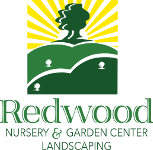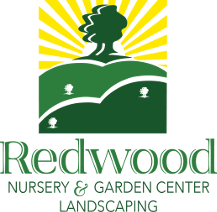POWERFUL POLLINATORS: SPECIALIST INSECT RELATIONSHIPS
by guest contributor, Chelsea Campbell, writing on behalf North Creek Nurseries
|
|
Generally speaking,there are two broad categories of pollinators: Generalist & Specialist Pollinators.
Most pollinators are generalists, meaning they consume a wide range of pollen from different plant species. Specialist pollinators evolved a relationship with a few or even just one plant species. Specialist bees evolved to emerge from their nest at the same time as their host plant begins to flower (UC Berkely Urban Bee Lab).
Let’s take a look at the Eastern region of the US for some specific data. It is estimated that “roughly 25% of the ~770 species of bees native to the Eastern United States are pollen specialists. Pollen specialist bees coevolved a continuum of generic and specific associations with flowering host plants or pollenizers” (Jarrod Fowler).
According to Fowler, 23% of Delaware’s native bees are specialist pollinators with 51 species total, and 21% of species of Pennsylvania are specialists with 70 species. Knowing this makes it even more important to include plants in your project designs that can help support those local native pollinators. European honey bees aren’t the ones facing decline – our native pollinators are. |
|
What to Plant
|
|
We’re challenging you to think deeper about supporting our local native pollinators. There are a few plant families that are known heavy-weights for supporting many species of pollinators, both generalist and specialist alike. According to Fowler’s research, by including these – among other – beautiful perennial favorites, you’ll be supporting a few hundred different species of specialist bees: |
|
|
|
But if you want to get a bit more specific, here are some plants we grow that support specialist pollinators.
|
|
|
|
|
|
INSECT: Monarch butterfly |
|
|
|
|
|
|
|
|
|
|
|
|
|
|
INSECT: Specialist bees
Andrena asteris, Andrena canadensis, Andrena chromotricha, Andrena nubecula, Andrena placata, Andrena simplex, Melissodes druriellus, Melissodes subillatus, Pseudopanurgus pauper |
|
|
|
|
|
|
|
|
|
|
|
|
|
|
INSECT: Specialist bees
Andrena canadensis, Andrena placata, Pseudopanurgus andrenoides |
|
|
|
|
|
|
|
|
|
|
|
|
|
|
INSECT: Specialist bees
Andrena distans |
|
|
|
|
|
|
|
|
|
|
|
|
|
|
INSECT: Specialist bees
Melissodes agilis, Melissodes trinodis, Megachile pugnata, Andrena accepta, Andrena aliciae, Andrena helianthi, Perdita bequaerti, Paranthidium jugatorium |
|
|
|
|
|
|
|
|
|
|
|
|
|
|
INSECT: Specialist bees
Colletes aestivalis |
|
|
|
|
|
|
|
|
|
|
|
|
|
|
INSECT: Specialist bees
Dufourea monardae |
|
|
|
|
|
|
|
|
|
|
|
|
|
|
INSECT: Specialist bees
Andrena aliciae, Andrena rudbeckiae, Colletes compactus, Melissodes agilis, Melissodes boltoniae, Melissodes druriellus, Melissodes subillatus, Melissodes trinodis, Paranthidium jugatorium, Pseudopanurgus andrenoides, Psuedopanurgus compositarum |
|
|
|
|
|
|
|
|
|
|
|
|
|
|
INSECT: Specialist bees
Andrena asteris, Andrena canadensis, Andrena chromotricha, Andrena nubecula, Andrena simplex, Colletes solidaginis, Melissodes druriellus, Perdita octomaculata, Andrena placata, Pseudopanurgus aestivalis |
|
|
|
|
|
|
|
|
|
|
|
|
|
|
INSECT: Specialist bees
Andrena hirticincta, Colletes simulans |
|
|
|
|
|
|
|
|
|
|
|
|
|
|
INSECT: Swallowtail butterflies, Andrena ziziae bee |
|
|
|
|
|
|
|
|
|
















